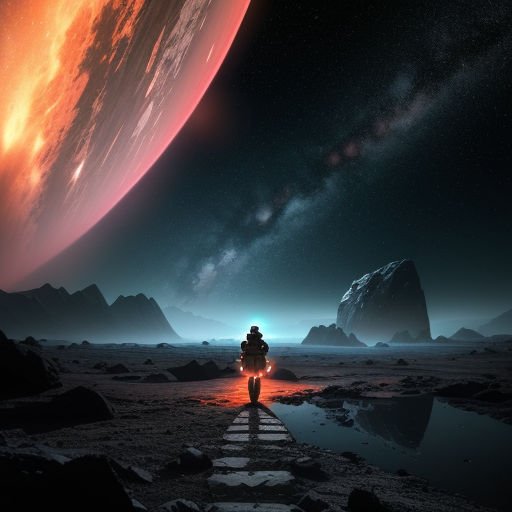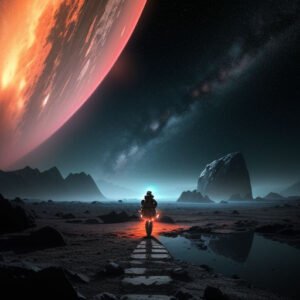Why Getting Stuck in Sci-Fi Caste Systems Is the Worst Future to Imagine
The Allure and Alarm of Logan’s Run’s Dystopian World
Imagine a future where youth is prized above all, and the natural process of aging is outlawed. Logan’s Run, the 1976 science fiction classic, presents such a scenario—an enticing yet unsettling vision of a society governed by strict rules tying age to status and survival. At its core, the film critiques the dangers of rigid caste systems, where individuals are confined to roles and fates determined by arbitrary criteria. The story highlights how such societal structures, while promising order and utopia, can ultimately erode freedom and humanity. Exploring Logan’s Run opens a compelling dialogue on the implications of caste systems in dystopian futures and their echoes in our world today.
Building the World: Logan’s Run and the Machinery of Caste Systems
Logan’s Run is set in a domed city where citizens live in apparent bliss but must submit to “Carrousel,” a ritual aging-out process at 30 years old. This practice symbolizes an extreme caste system—one where youth dictates one’s societal value and longevity hinges on obedience.
The Structure Behind the Surface
Beneath the city’s vibrant exterior lies a meticulously maintained hierarchy:
– Age as a social currency, controlling power and privilege
– The Sandmen, enforcers who maintain order and enforce the age limit
– The elite controllers manipulating information to perpetuate compliance
This infrastructure creates a caste-like stratification where individual worth is predetermined.
Control Mechanisms: Surveillance and Conditioning
The citizens wear lifeclock crystals that change color with age, making hidden nonconformity impossible. Constant monitoring reinforces the caste system’s grip, aligning public perception with the narrative that “Renewal” leads to true freedom—even as it masks death. Conditioning through education and propaganda further ingrains acceptance.
Logan’s Run and Caste Systems: Parallels with Real-World Social Orders
The film’s depiction of age-based caste systems mirrors historical and contemporary instances where societies categorize individuals by birth, race, class, or caste.
Age as a Societal Divider
While Logan’s Run uses age as the primary caste marker, real societies have often blurred lines between biological factors and social roles. For example, certain tribal systems determine status by age group, while youth culture in modern times can paradoxically both empower and marginalize.
Invisible Yet Powerful Divides
Like the lifeclock crystals, social markers in caste systems often remain invisible until highlighted by societal enforcement. The film’s resonance is evident in the way it critiques not only overt classes but the subtler ways caste systems sustain inequality and suppress dissent, akin to rigid caste or class structures worldwide.
Thematic Exploration: The Human Cost of Caste Systems in Logan’s Run
Beyond structural critique, Logan’s Run probes the psychological and moral toll such caste systems exact on individuals.
The Price of Enforced Eternity
Citizens’ fixed lifespan mandates force them into complicity with a lethal system. This raises profound questions about autonomy and identity. When life’s natural course is truncated artificially, what becomes of purpose and meaning? The film suggests that the sacrifice of individuality for societal order results in spiritual death.
Rebellion and Escape as Human Imperatives
The protagonist Logan’s journey from enforcer to fugitive embodies the innate resistance against oppressive stratification. His quest illuminates a fundamental human drive to transcend imposed caste systems, seeking self-determination even at great risk.
Innovative Sci-Fi Techniques Highlighting Caste Systems in Logan’s Run
Logan’s Run stands out for its creative depiction of dystopia and caste systems through pioneering visual and narrative choices.
Set Design and Costume: Visualizing Hierarchy
The sleek, modernist cityscape and uniform costumes reflect both utopian aspirations and sterile conformity. The lifeclock’s glowing crystal is a vivid symbol making the otherwise invisible caste system vividly tangible on screen.
Storytelling Choices Amplifying Social Commentary
The film balances action and mystery while threading deeper social themes. By depicting both the enforcers and the rebellious citizens, it presents caste systems as complex webs where complicity and resistance coexist. The ambiguous ending invites viewers to ponder ongoing challenges of societal stratification.
Legacy and Cultural Impact: Logan’s Run’s Lasting Lesson on Caste Systems
Although over four decades old, Logan’s Run continues to influence dystopian narratives exploring caste systems and social control.
Echoes in Contemporary Media
Modern works like “The Hunger Games” and “Divergent” revisit themes of controlled lifespans, prescribed social roles, and rebellion against caste orders. Logan’s Run remains a foundational narrative informing these explorations.
Discussion Catalyst on Ageism and Social Stratification
The film provokes ongoing debate about ageism and systemic inequalities. Its unique premise foregrounds age-based discrimination, prompting reflection beyond its sci-fi setting.
For more insights on caste systems and societal structures in speculative fiction, visit the [Dystopian Society Archive](https://www.dystopiansocietyarchive.org).
What Logan’s Run Teaches Us About Caste Systems and Human Freedom
At its heart, Logan’s Run challenges us to question the fairness and humanity of caste systems, whether in fictional futures or real societies. It shows the dangers of rigidly assigning value based on arbitrary characteristics like age and the corrosive effects on community and selfhood.
By dramatizing the revolt against such systems, the film celebrates the unyielding human spirit striving for dignity and choice. It reminds viewers that true utopia can only emerge where freedom and equality replace fear and division.
If you’re captivated by how science fiction reflects and critiques society, dive into Logan’s Run. Reflect on the caste systems embedded in your world and consider what roles you play—whether as enforcer, rebel, or bystander. Join conversations about breaking down these invisible walls and shaping futures where every individual’s worth transcends imposed limits.














Post Comment